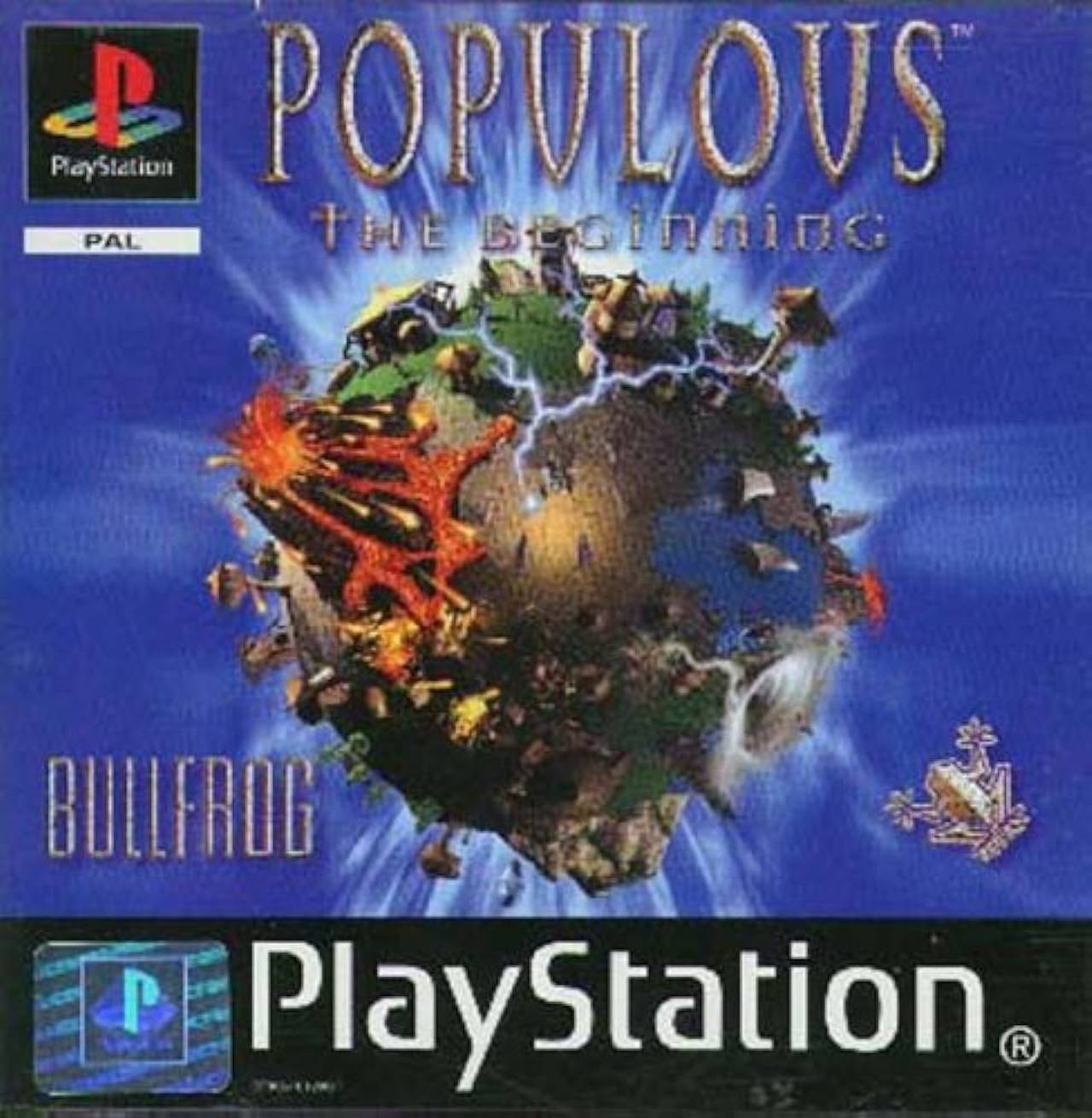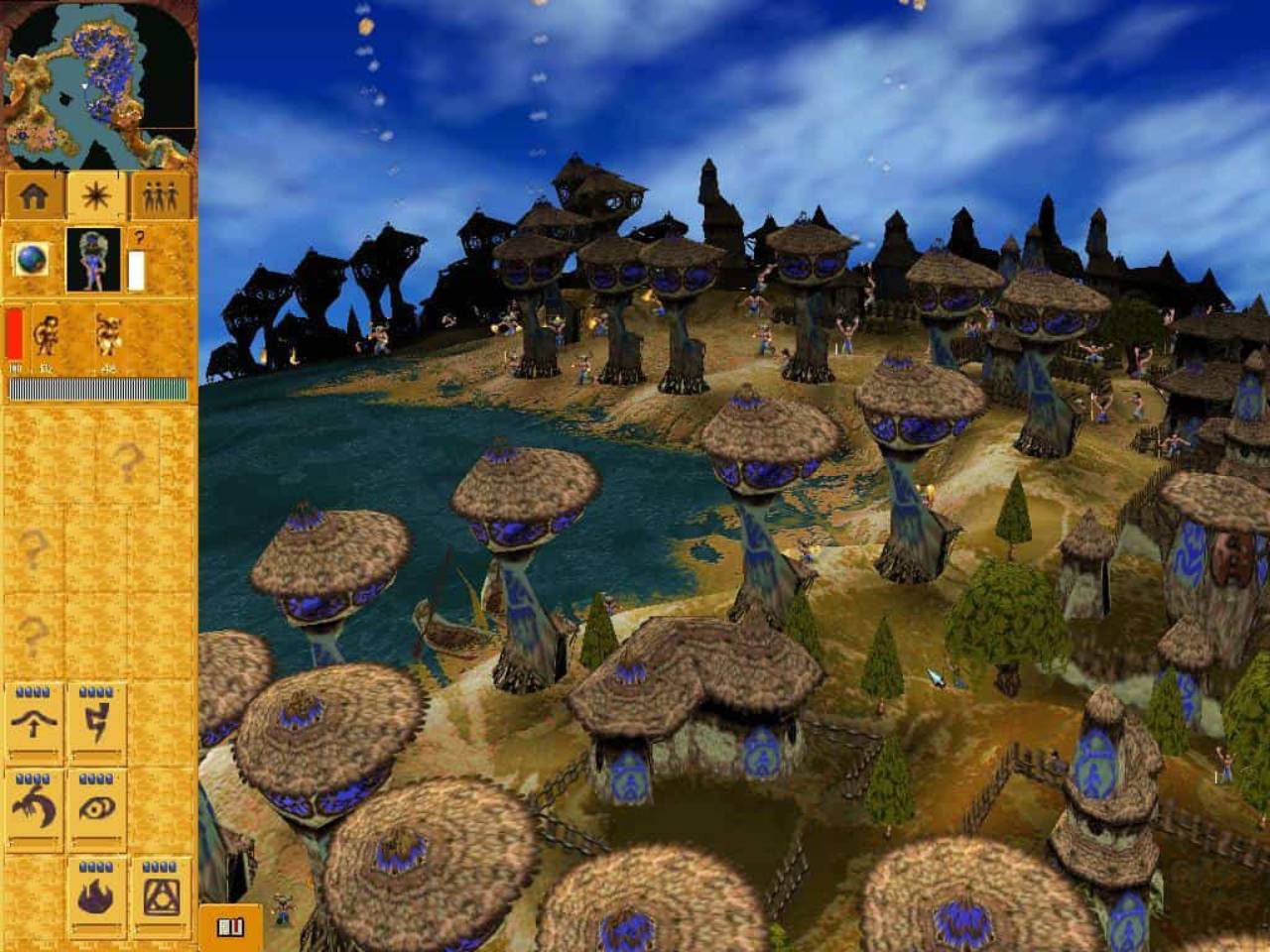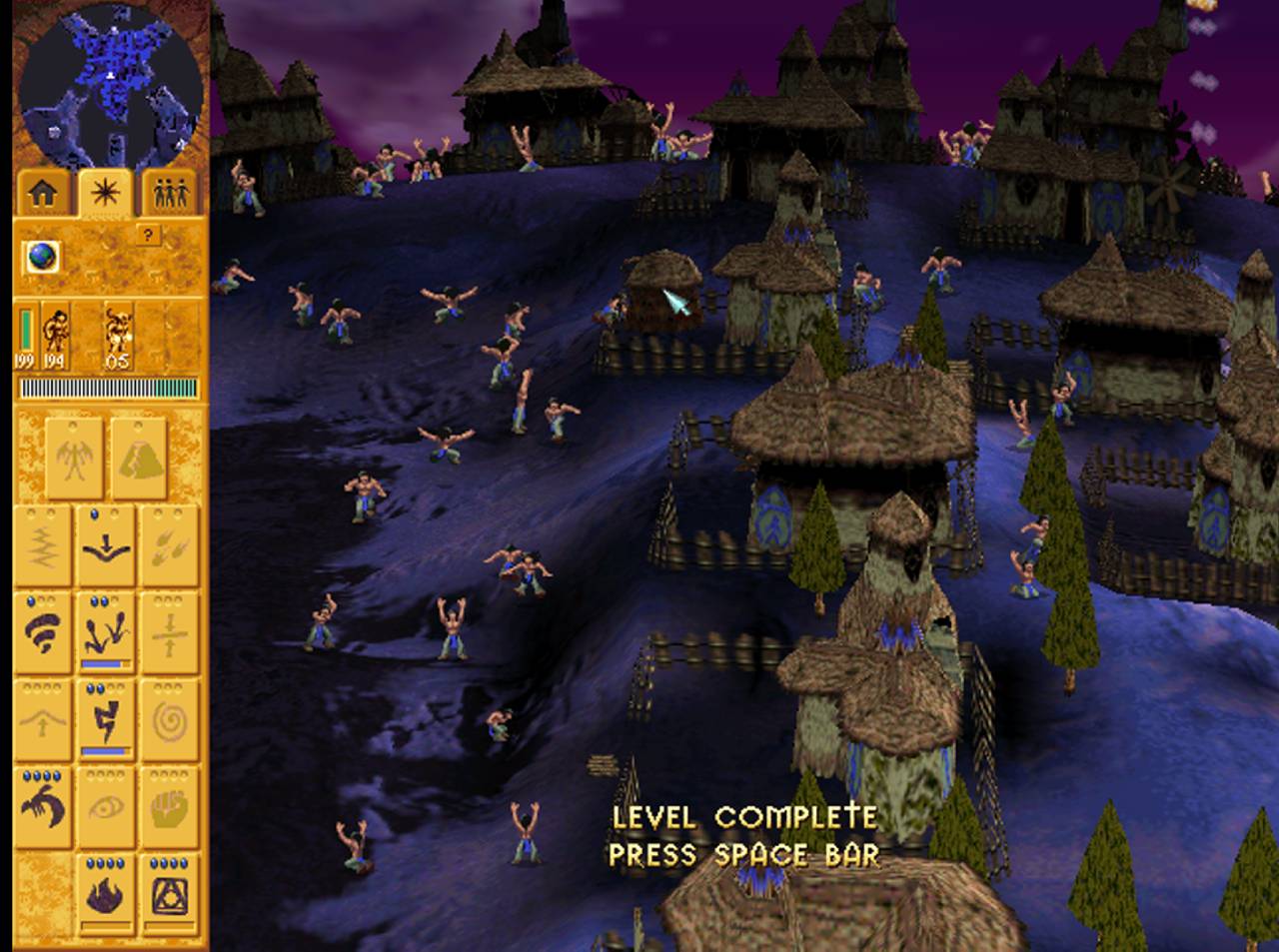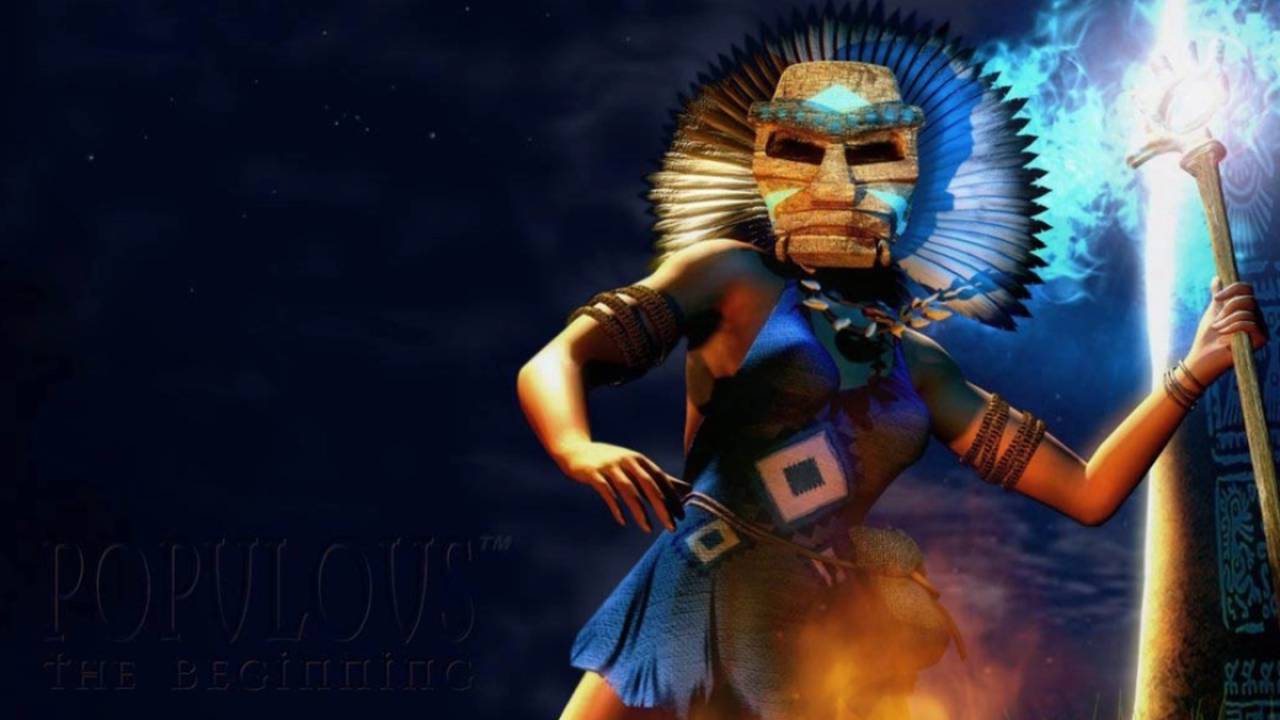Let me take you on a little journey.
It is the late 90s and a young Connor McLay is as dumb as a sack of hammers.
But he’s also excited because he sweet talked his teachers into a good report at school and as a reward, he’s borrowed his uncle’s PS1 and his dad just finished hooking it up to the main TV.
In a week or so he’ll go to the video store and rent Spyro 2 for the hundredth time, but for now he’s limited to the disks his uncle forked over for along with the console.
There’s a few to choose from.
His dad is a fan of Quake 2, Ace Combat and Medal of Honour.
Connor is partial to G-Police himself… but before that is another strange game that would go on to inform his tastes for decades to come.

Populous – The Beginning is a real time strategy game by Bullfrog, the OG gaming brainchild of Peter Molyneux that was swallowed whole by EA at a time when the average demographic reader of this website was likely still figuring out what number comes after five.
It was the third entry into a series, not that I would figure that out until I was an adult looking back, and it remains one of the games I think about even now, over twenty years after putting it into the PS1 for the first time.
I can recite the words of the intro cutscene from memory. I still remember the commanding voice of Janet McTeer telling me about how she alone possessed the second sight and was destined to become the godly shaman. That the other tribes moving through the heavens were a plague and only with faith and courage could we destroy our enemies.
Thus my naive young self was introduced at once to the concepts of racism and the girl-boss.
It was also my first introduction to the RTS genre and I didn’t really get it. Dumb as a bag of hammers remember?

You are the shaman. The leader of one of four tribes vying for dominance over a solar system. How these primitive tribes are managing to teleport between planets and how all twenty five worlds manage to occupy the Goldilocks zone of this one star is not explained, but those were questions which didn’t occur to me back then.
Your shaman returns to life if she dies. Unless she has no loyal villagers left, then you lose. There are a few missions with more specific goals and win conditions, but for the most part, it’s a race of extermination.
Populous started out its life as a god sim and that influence carries over into this aspect.
The shaman, by far your most powerful piece, is not a god… yet… but she’s getting there. Her powers are already impressive and they will be the keystone of your victory.

She is capable of casting spells that can modify the environment, summon tornadoes and lightning strikes, turn patches of ground into deadly poison swamps and all kinds of other fancy war crimes you can commit on your enemies.
As for villagers, you have the basic braves who build things, warriors who have high health and melee damage, preachers who can convert enemy units and fire warriors that can attack at range.
There is also a spy.
You won’t use the spy.
There’s no resources to keep track of in Populous, not unless you count the mana that charges your spells which happens faster when you have idle braves resting in huts.
Put down a building plan and your braves will start work automatically, cutting down nearby trees and levelling out the terrain.
There’s no research, no upgrades, and no ticking numbers to count until you can unlock your big guns.
This is why, to this day, I count Populous – The Beginning amongst my favourite RTS games ever.
Because rote memorisation of a build and resource collection order will not save you here.
There is no accounting in Populous, only strategy.
The first few levels are a breeze, but it’s not long before you are routinely fighting all three enemy villages on one map, all of whom are fighting each other as much as you.
From there, the tactical game becomes a push and pull of armies swarming into areas, establishing holds and securing the valuable stone heads and totems around the map that empower your shaman.
So… flaws.
This is a game made in the late 90s… it shows.
The 3D work is impressive for its time, but don’t come here expecting Balder’s Gate 3. Sprites are still 2D and rotate in choppy 45 degree blips.
Pathfinding is surprisingly competent for a game of its time but can still run into issues with hills and getting around them.
Controls on the other hand will drive you insane until you get used to them.

The second RTS I played after Populous was Supreme Commander; it was only then, when two quick scrolls of the mouse wheel could bring your view from any part of the map to any other, that I realised how much of a mess I had been dealing with.
Sound design is impressively evocative.
Braves speak a strange tribal language and you will come to recognise the single word grunts of acknowledgement when you select them.
Even dumb as I was, it wasn’t long playing this game before I knew which spell sounded like what, and that if I heard a female voice casting a spell I don’t have yet, I’m probably under attack.
Music is a soft and mournful tune of trilling pipes until the moment a fight begins, then the drums kick in. The entire set up well establishes the feeling of being a tribal chief in a brutal era where survival means murder and you aim to be the last woman standing.
If you want to play Populous – The Beginning today, your best bet is Good Old Games. It’s cheap and you will know pretty quickly if you like it or not.
Me, I’m off to cause more natural disasters.

